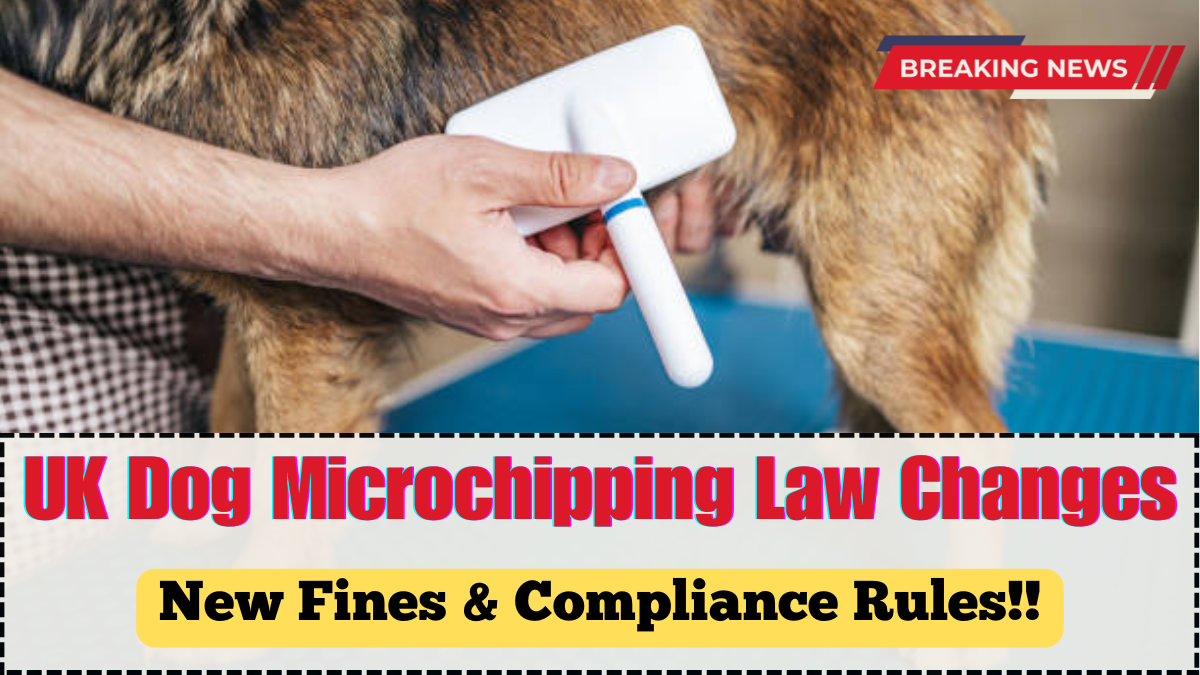The UK Dog Microchipping Law Changes 2025 have officially come into effect, making pet identification stricter and more transparent. These updated rules aim to enhance pet safety, reduce the number of lost and stolen dogs, and hold owners more accountable. As a dog owner, compliance is now legally required — and penalties for ignoring the law are significant.
Whether you’re adopting a puppy or already own a dog, staying informed about these pet ID rules is essential. Here’s everything you need to know to ensure your dog is protected and you avoid fines for non-compliance.

What’s New in the UK Dog Microchipping Law in 2025?
The UK Dog Microchipping Law Changes 2025 introduce important amendments to existing legislation that make registration and record-keeping more stringent for pet owners. These updates build on the 2016 law that made microchipping compulsory.
Key updates include:
-
Microchipping required before 8 weeks of age for all puppies
-
Owners must update contact details within 14 days of change
-
All microchip databases must now be government-approved
-
Breeders must be listed as the first keeper on microchip records
-
Stricter penalties for inaccurate or outdated information
The emphasis is now on traceability and accountability. These rules aim to ensure lost pets can be quickly reunited and that irresponsible ownership is minimized.
What Are the Penalties for Non-Compliance?
Failing to comply with the UK Dog Microchipping Law Changes 2025 can result in serious consequences. The law gives local authorities the power to issue penalties to owners who don’t follow the required steps.
Fines and enforcement include:
-
£500 on-the-spot fines for not microchipping your dog
-
Fines for failing to update owner information
-
14-day notice period to correct the issue before legal action
-
Seizure of pets in extreme non-compliance cases
-
Additional fines for breeders failing to register new litters properly
These fines for non-compliance aim to ensure all dogs in the UK are traceable and safely identified throughout their lives.
How to Stay Compliant With the New Rules
Keeping your dog compliant under the UK Dog Microchipping Law Changes 2025 is simple if you follow the correct steps from the beginning.
Follow these tips to stay within the law:
-
Ensure your dog is microchipped by 8 weeks old
-
Register your contact details with a DEFRA-approved database
-
Update your information whenever you move or change numbers
-
If you’re a breeder, microchip puppies before rehoming
-
Ask your vet to verify chip functionality during annual checkups
Pet owners must also keep confirmation of registration and updates for their own records.
Why These Changes Matter for Pet Safety
With increasing numbers of dog thefts and missing pets in the UK, these updates to the pet ID rules are timely and necessary. They improve the chances of lost dogs being returned quickly and prevent disputes over ownership.
Benefits of the new law:
-
Improved recovery rate for lost/stolen dogs
-
Easier tracing of irresponsible breeders
-
More accountability for pet ownership
-
Enhanced protection for vulnerable dog breeds
-
Reduced strain on animal rescue organizations
The UK Dog Microchipping Law Changes 2025 not only protect pets but also give peace of mind to loving pet parents.
FAQs
What age should my dog be microchipped under the new 2025 law?
All puppies must be microchipped by 8 weeks of age, according to the updated legislation.
What is the fine for not microchipping my dog?
You may face an on-the-spot £500 fine, with a 14-day window to correct the issue before further penalties.
Do I need to update my details if I move house?
Yes. You must update your contact information within 14 days of moving to avoid being non-compliant.
Is any microchip database acceptable?
No. You must register your dog’s chip with a DEFRA-approved microchip database.
What happens if my dog’s chip isn’t working?
Your vet should check chip functionality during annual visits. If faulty, it must be replaced and re-registered.
Click here to know more.
